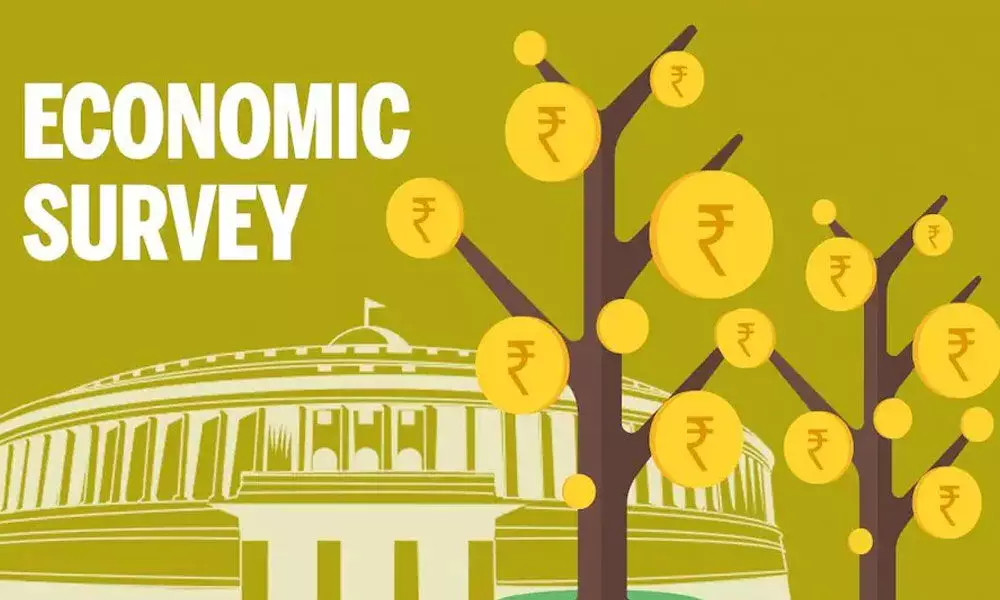Economy showing encouraging trend despite Covid crisis
Going by the Economic Survey-2022, Indian economy is estimated to have crossed the pre-pandemic level in 2021-22 with 9.2 per cent growth, although contact intensive services are still impacted.
image for illustrative purpose

Going by the Economic Survey-2022, Indian economy is estimated to have crossed the pre-pandemic level in 2021-22 with 9.2 per cent growth, although contact intensive services are still impacted. The survey forecasts that GDP will grow by 8.0-8.5 per cent in 2022-23. In the interest of transparency, all assumptions have been clearly laid out. This is more conservative than IMF's 9 per cent but still the world's fastest. The Survey came in 2 volumes- the first looked at overall macroeconomic and sectoral developments, and the second is a revamped statistical appendix.
Overall, the economy and finances show an encouraging trend, as is borne out by the estimated FY 2021-22 growth rate of 9.2 per cent, while managing to limit the fiscal deficit to target levels of 6.8 per cent. One of the key factors contributing to the GDP growth has been high government consumption which grew at 7.6 per cent in real terms during FY 2021-22. Gross Fixed Capital Formation also increased by 6.9 per cent during the year – here again the government spending on infrastructure has been the key driver as highlighted by the Economic Survey.
The concern remains private consumption spending which remains at 97 per cent of pre-pandemic levels. Similarly, the Survey also acknowledges that private investment recovery is still at its nascent stage. To make the economic growth sustainable, it is critical that these two components pick up and Budget 2022-23 may have these as key focus areas.
The survey reckons that the upcoming budget faces acute policy trade-offs between nurturing a nascent growth recovery and diminishing fiscal space with challenging debt dynamics. Policymakers should ensure the fiscal impulse is maximized to improve potential growth, while signaling adherence to medium-term fiscal sustainability. This entails continued financial sector reforms, better resource allocation, and funding by aggressive asset sales via functional infrastructure monetization, divestment/strategic sales. The other dark cloud on the horizon are the rising global oil prices which may get further accentuated with tension in Ukraine. WPI is already in double digits, with the 'fuel and power group' WPI being greater than 20 per cent. The baseline assumption is stable global financial markets with orderly G-4 policy normalisation and well behaved oil market ($70-$75/bbl), and easing global supply chain disruptions.
One will also have to keep in mind that while the survey highlights use of social safety nets as one of the pillars in the Government's 'Barbell' strategy, it remains to be seen to what extent Budget 2022-23 institutionalizes this through outlays in key social safety net schemes like PM-Kisan, PM Garib Kalyan Anna Yojana etc. Mind you that at the end of the day, the Economic Survey laid out the background for the budget to be released on Tuesday.

